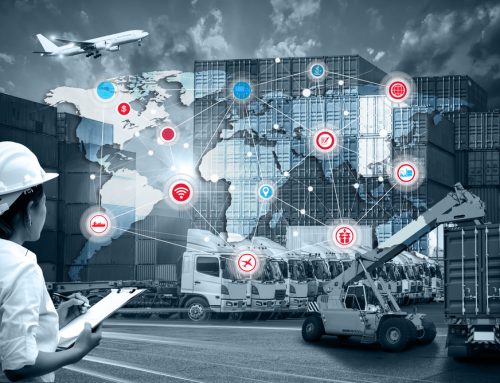The Business Problem
In the world of logistics, empty fleet management cannot be overlooked. For container shipping, the Boston Consulting Group estimates that up to 8% of a shipping line’s operating costs relate to the repositioning of empty containers – without the associated costs of empty container storage and maintenance (BCG, 2015). The situation is not very different for road transportation: improper empty fleet management can create surpluses in one area and shortages in another, leading to lost revenues and increased costs.
Among logistics companies, two common factors stand out that further compound the issue of empty container management:
- Using Excel for planning, inefficient in part due to high amounts of manual input (Supply Chain Dive, 2018)
- Lacking visibility on costs, due to the lack of a company-wide cost overview system
The Solution
NileDutch and TIP Trailer Services are two Dutch logistics players that turned to AI solutions to improve their empty fleet management. Though the first one operates on sea and the latter on land, the two companies share similarities both in overall fleet sizes and in the problems that unused assets can create for them. The key to reducing costs associated with unused assets also lies in the same place: improving the companies’ forecasting abilities, while being able to more efficiently reposition their empty fleet. Using historical data – mostly proprietary – to feed into machine learning algorithms, the companies were able to develop tailor-made solutions to reduce costs associated with empty fleet management.
Benefits
A tailor-made Artificial Intelligence system can help logistics companies plan better, leading to less congestions and more efficient use of their assets. This has led to:
- More efficient planning: moving away from time-intensive manual planning using Excel, the companies are able to create automatic plans that are also more accurate due to the implementation of AI. This alleviates congestion both physically, in asset repositioning, but also organizationally, freeing up employee time.
- Decrease in storage costs: the AI-powered planning tool is able to better predict when and where certain assets are required. Therefore, the companies’ containers and trailers ended up spending less time in storage facilities.
- Increased transparency across departments: since the companies are now working with consolidated information available to all offices across global supply chains, more informed decisions can be taken by all employees.
Impact
In the case of NileDutch, the AI solution is able to calculate an optimized empty container plan 10 to 12 weeks in advance, being able to identify how to avoid container surplus and the most efficient routes to reposition its fleet. The company was also able to reduce its fleet size: the AI-powered planning allowed the company to satisfy the same demand with less assets.
For TIP, a similar system is able to provide 95% demand accuracy 6 weeks ahead of time. On a two-week basis, the accuracy is up to 98%. This has allowed the company to service one-way rentals to its clients, thanks to its optimized and flexible planning. With the implementation of the AI system, the company expects an 11% increase in revenue.
Accessibility and Requirements
In order to build and train the AI optimization system, companies first need to obtain the necessary data. While historical data was available, a multi-step approach was necessary in order to transform the data coming in from various EDIs into one, usable set.
After cleaning the historical data, it was fed into machine learning algorithms in order to create a demand forecasting model, helping the companies identify how many assets would be required at a given time at a given place.
Both example companies lacked the full data requirements to build this model, but this was not a problem: the model was further created with data from third-party global logistics actors, such as port authorities, storage partners, or freight exchange partners, in order to create the optimal routes to reposition and store their assets. NileDutch used a combination of internal and external data to feed into a ML algorithm:
- Storage costs
- Gate costs
- Repair costs
- Repositioning costs
- Suppliers
- Countries
- Ports
- Depots
- Safety stock
- And others: stevedoring costs, grading costs, outports, voyages, etc.
Taking all of this information and creating a usable plan for a major shipping company would be an impossible task using manual inputs in Excel. For an AI system, it is simply a matter of feeding the data and using the outputs – not to mention the ever-learning and improving aspect of the system that comes with gathering more data as it’s being deployed and over the years.
Want to know more what AI can do for your supply chain?
Contact us.
More AI Case Studies:
AI case study 5: Workflow automation with TradeCloud One
The Business Problem In this business case, AI workflow automation will be exemplified using the example of a TradeCloud client. The client is a manufacturer of machines for the sorting of eggs and [...]
AI case study 4: Machine Learning in the Manufacturing Process
The Business Problem The manufacturing process of memory chips involves around 1,500 steps that need to be performed in sterile conditions to avoid specks of dust from damaging the wafers. However, damages occur [...]
AI case study 3: Cost-saving AI in Manufacturing Logistics
The Business Problem In the world of logistics, empty fleet management cannot be overlooked. For container shipping, the Boston Consulting Group estimates that up to 8% of a shipping line's operating costs relate [...]
AI case study 2: Efficient inventory management using Artificial Intelligence
The Business Problem A major challenge for manufacturing companies is to know what, when, where and how much stock should be ordered and kept. SME’s traditionally calculate this manually using Excel, Google Sheets [...]
AI case study 1: Demand Forecasting using Artificial Intelligence
The Business Problem One of the biggest challenges for business executives today is demand volatility in relation to demand forecasting. Whereas data availability continues to increase, customer purchase patterns are becoming increasingly complex, and [...]





